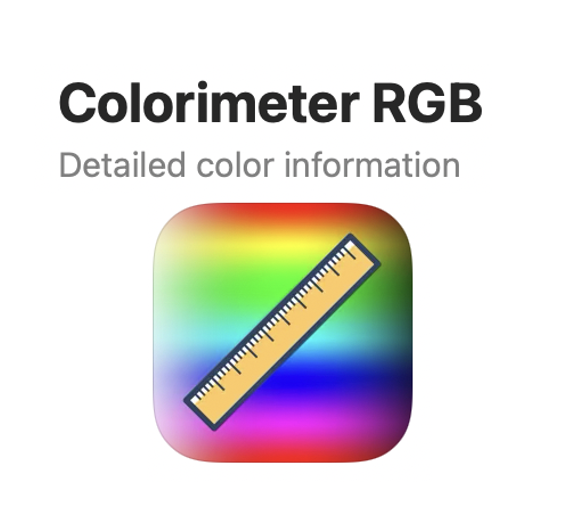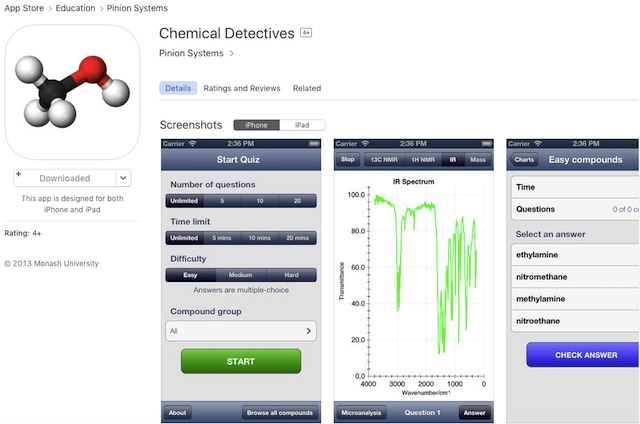Chemistry apps

This page looks at Apps available for smart phones that can be used for chemistry. It includes specific details of one that can generate hands-on data at home using simple chemicals that can be used for the Internal Assessment. Another App described is useful for identifying organic compounds from their spectroscopic data.
Why use chemistry apps?
Technology is changing fast. Many (all?) of your students will have a smart phone which may be either an iphone using Apple software or another make which uses Android or other software. There are apps for all the different systems but as I've got an iphone I'm more familiar with the chemistry apps available from Apple. As teachers it is worth knowing what your students may be accessing and also keeping up with what could be useful to you too, particularly in these current pandemic times.
Typing 'chemistry' into 'search' and then filtering for 'Education' produces 71 different Apple apps for iphone and MacBook Air at the time of writing this.

Four of the listed Apple Apps under chemistry/education
As is usual in life you get what you pay for. Many of the free apps are really very trivial and are probably of not much use. Some could be useful for checking work but not perhaps for educational reasons. For example, 'Chemical Calculator' which costs £0.89 enables students to solve different types of chemical problems on topics such as gases, solutions, atomic and nuclear chemistry, thermodynamics, electrochemistry and acids and bases. No equations are given. The student simply plugs the values in (e.g. P,V,n and T for ideal gas calculations) and the answer simply appears. Others e.g. 'Chemistry utilities' (cost £8.99) could be used for simulations but it is not as good as the simulations produced by the Royal Society of Chemistry. One App that really is good and could be used to produce primary hands-on data at home is the free Colorimeter RGB App for use on iphones. James Midgley (Mr M 4 Chem) has produced a video showing how this can be used to study the kinetics of the oxidation of a blue food dye using only chemicals that can be bought in local shops. This could be extended to cover any safe reaction at home where there is a colour change.
![]() How to do chemistry with your iphone
How to do chemistry with your iphone
Several of the apps, e.g. 'Molecules' (which costs £4.99) allow students to 'see' molecules in three-dimensions and rotate them etc. which could be useful, although probably is still not as good as making actual three-dimensional models using molymod kits. Perhaps it is still early days but it might be worth keeping an eye on future developments
Chemical Detectives App
Many thanks to Lanna Derry from Tintern Grammar, Melbourne who has recommended the 'Chemical Detectives App'.

It is a free App for iPhones and iPads and gives students the chance to solve chemical structures using microanalysis data, NMR, IR and Mass spectra. It is useful for HL topic 21 and possibly SL topic 11 too. It has been put together by the Chemical Education Association (a not for profit organisation of secondary and tertiary Chemistry educators) whose aim is to promote Chemistry education in Victoria (Australia). You will need to tell your students to ignore the 13C NMR spectra as the IB only covers 1H NMR. The 1H NMR shows good splitting patterns and the chemical shifts for each signal but unfortunately no integration traces.
If, like James and Lanna, you find an app you really like, or that you are finding your students are making good use of, and would like to recommend it, please let me know using the comments box below.

 IB Docs (2) Team
IB Docs (2) Team